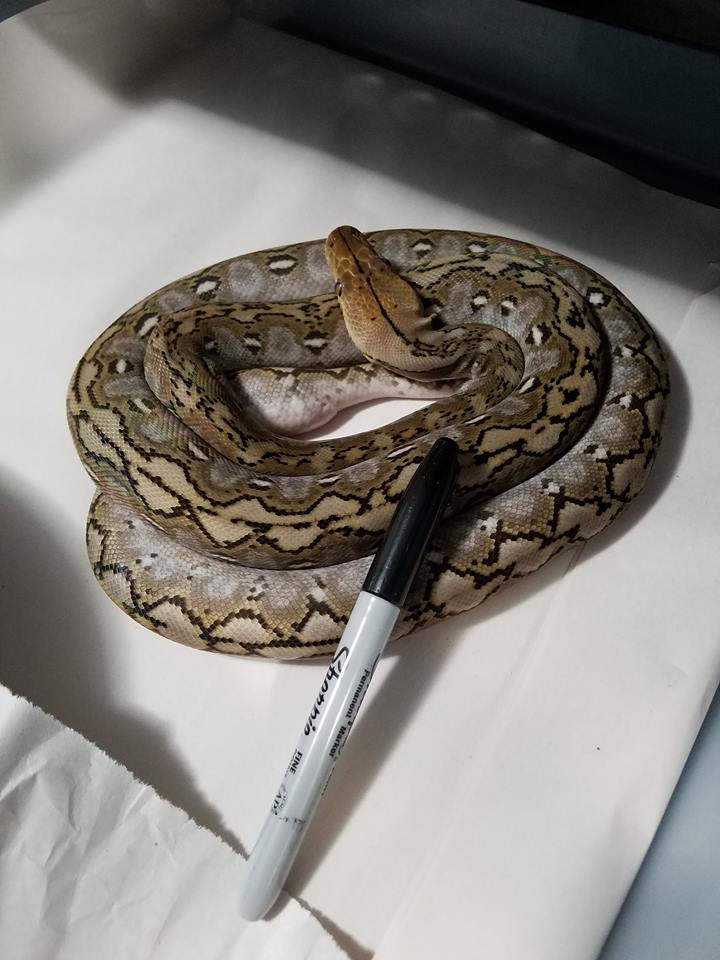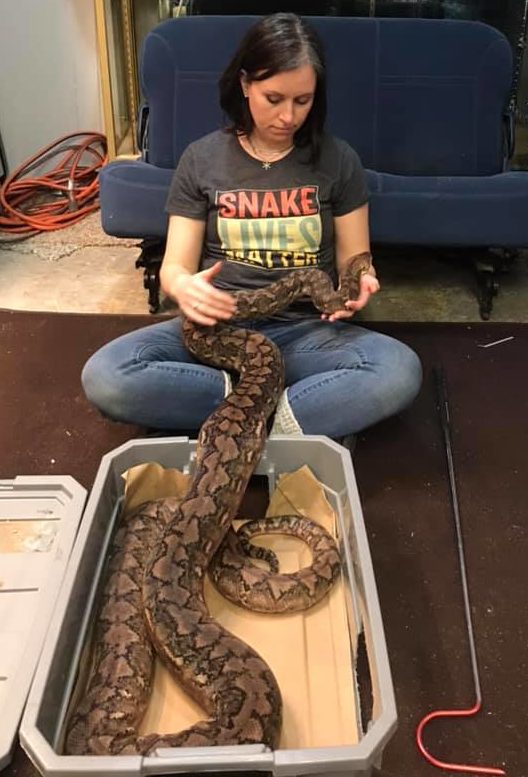
(Photo credit: Kalaotoa superdwarf; Brian Cimala)
There are some significant size variations in wild reticulated pythons. The extremely large retics that have become so famous are known as “mainland”. These are the animals that inhabit the mainland of Thailand and the neighboring large islands of Indonesia. Mainland retics are able to achieve massive size due to high food availability. However, there are some very small islands in south eastern Indonesia that contain what we call the “dwarf” retics. These small races are not true genetic dwarfs. Rather they have evolved smaller body size over time in response to an evolutionary push from scarce food resources. The name “dwarf” and “super dwarf” are marketing terms used to sell these smaller races of snakes. The only real difference between “dwarf” and “super dwarf” is based on which island they came from. Two of the island races are smaller than the others so they have been labeled “super dwarf” and the animals from the larger islands (although still very small) are referred to as “dwarfs”.
The islands are:
Karampa, Kalaotoa, and Madu 5-8ft (superdwarf)
Kayuadi 6-10 ft, Jampea and Selayer 8-12 ft (dwarf)

Please keep in mind these are still RETICS and will still be large snakes in comparison to boas, and some of the other types of pythons. Check out Lore and Realm on their page – they are much older than what most people are used to so have had time to grow quite large. They are 100% pure blood Kalaotoa superdwarfs – at 15 years old they are about 9 feet long and weigh 31 and 39 pounds. These snakes continue to grow for life. Pictured here is Lore.
Watch this video by Reach Out Reptiles for a good explanation of how breeding for size works in reticulated pythons.
Snake Haus has 1 dwarf and 4 superdwarf reticulated pythons. Meet them here by following their links below:

